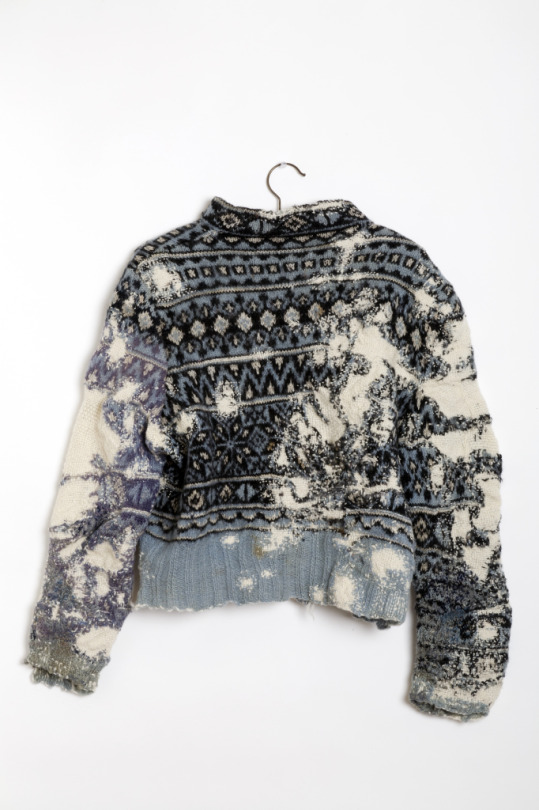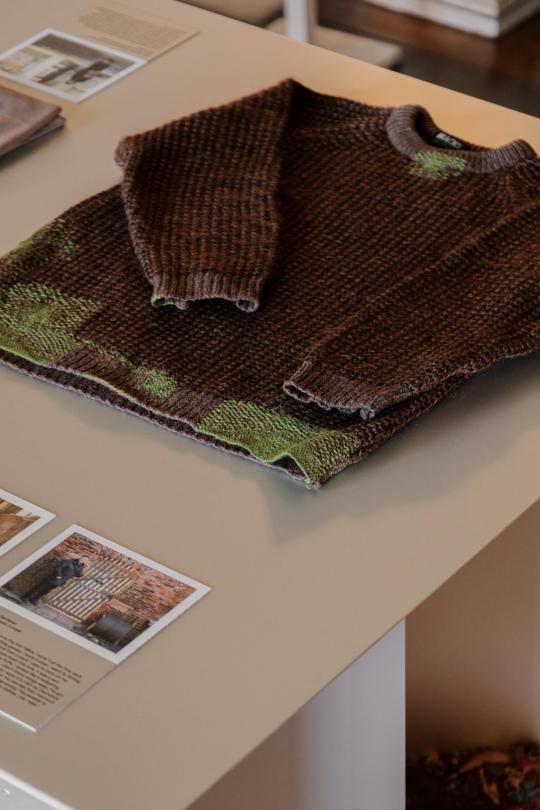#celia pym
Text
CRITICAL CONSUMPTION: Wien bis 08.09.2024
Ständig neue Trends, Textilriesen, die jährlich Dutzende neue Kollektionen unter prekären Produktionsbedingungen auf den Markt bringen, geschredderte Neuware internationaler Luxuslabels und die Zerstörung von Ökosystemen durch textile Müllberge: Die Mode(industrie) steht im Hinblick auf Konsumverhalten, Herstellungsprozesse und Nachhaltigkeit zunehmend im Fokus.
Tenant of Culture, To Be Titled,…
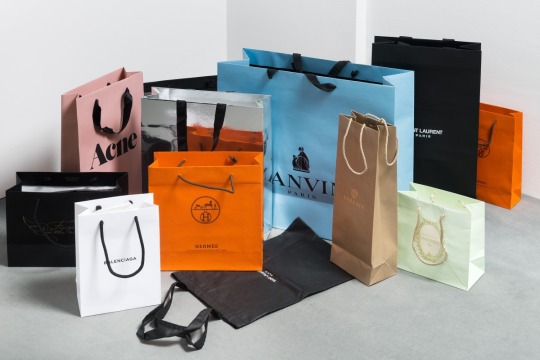
View On WordPress
#Celia Pym#CRITICAL CONSUMPTION#Expansion#Fast fashion#Globalisierung#Konsum#Konsumrevolution#Lieferketten#MAK GALERIE#MAK Wien#Mode#Museum für angewandte Kunst#Produktionsbedingungen#Recycling#repair Manifesto#Sustainable Development Engagements#Trends#Wandel
0 notes
Text

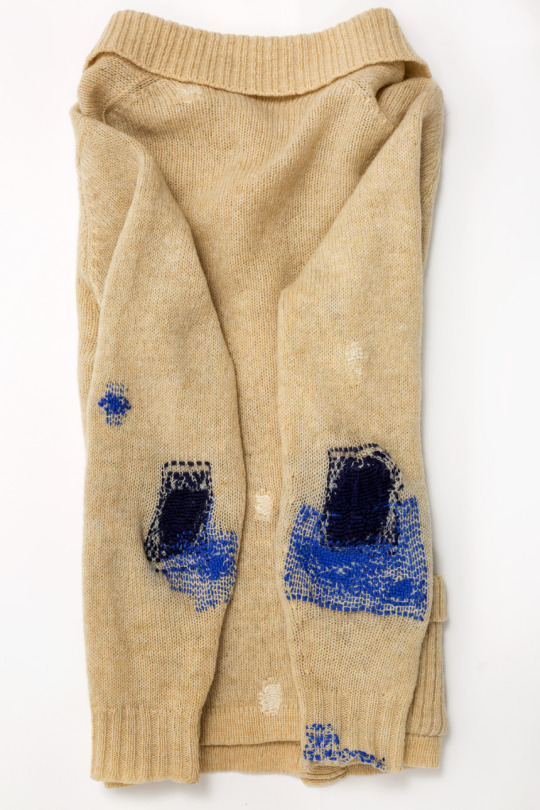

celia pym's lovely darning work
made me think of that "god made trans people for the same reason he made wheat and not bread, and grapes but not wine" quote. imperfections, inherent impermanence, can be remedied in change. the otherwise rotten grape, the otherwise discarded garment, the otherwise unloved body.
2 notes
·
View notes
Text
LA MODA GIUSTA (parte II)
(Segue )Ed effettivamente la catena è troppo lunga, tanto è vero che il 42 per cento delle imprese del settore non sa né dove, né da chi siano fabbricati i propri vestiti. Ma tra gli obblighi morali di chi fa moda, oltre a quello di cercare di soddisfare il proprio cliente, ci sarebbe o ci dovrebbe essere anche quello di creare profitto con qualcosa di eticamente sostenibile . Purtroppo ben poche sono le aziende che scelgono di mantenere una dimensione contenuta, ma stabile, a tutto vantaggio di un consumismo sfrenato che promette grandi margini di profitto anche, anzi soprattutto, sulla pelle di chi lavora e viene sfruttato da questa diabolica e perversa macchina. “All’industria della moda interessa poter contare su lavoratori con poca voce e ancor meno diritti: per questo i suoi operai preferiti sono gli animali…” scrive ancora la Riezu: oche e anatre spennate per farci piumoni, conigli d’angora scuoiati vivi e serpenti, anch’essi vivi, gonfiati d’acqua per ottenere maggiori quantità di pelle. Insomma un mondo infernale dove lavoratori e animali sembrano trovarsi nello stesso girone, a tutto vantaggio del nostro futile apparire. Certo che è abbastanza semplice comprendere che, se per produrre un solo paio di jeans occorrono circa 8.000 litri d’acqua, cioè quanto una persona può bere in dieci anni, i danni provocati dalla moda al nostro ambiente diventano più che evidenti. Marta Riezu però non espone solo fatti o denuncia solo il malaffare del sistema moda, ma propone anche soluzioni, in particolare nella seconda parte del libro intitolato “Proposte”. La principale può essere riassunta nel paradigma (che susciterà le ire di qualcuno, anzi più di qualcuno) che afferma che occorre comprare di meno. Secondo l’autrice comprare di meno è quello che distingue una persona con i piedi per terra da un incosciente. Il cliente non ha sempre ragione, poiché siamo davvero arrivati alla fine del percorso: senza materie prime è necessario uno stop ai “negozi carini” (di questo ormai si tratta) per l’indispensabile tutela del pianeta. Per proteggere l’ambiente dovremmo avere più cura delle nostre cose, non solo quindi consumarle, ma anche imparare a ripararle e questo vale per tutti gli oggetti, a cominciare dai capi di abbigliamento che indossiamo. La Riezu cita non a caso il lavoro dell’artista tessile britannica Celia Pym che nel suo lavoro di “rammendo etnografico”, medita sul parallelismo tra cura del corpo e cura dell’indumento che indossiamo. Ma poi, lontano da ogni romanticismo, il volumetto prende in considerazione i veri giganti del vintage, come i siti Yoox, The RealReal, Vestiaire Collective. Poshmark, Rebelle, Designer Exchange, Tradesy, che hanno fatto del riuso una filosofia di massa. Un altro tema trattato è quello della tracciabilità del capo di abbigliamento, che certo richiede un certo allenamento e una alta capacità di discernere tra tessuti, luoghi di produzione, distributori ecc. Insomma un inconsueto viaggio nel mondo della moda per insegnarci a scegliere con consapevolezza, pur accettando l’idea che la moda è un fatto piuttosto serio, non tanto per i suoi aspetti semantici, ma per i risvolti materiali che influenzano massivamente la vita sulla terra e della terra.
3 notes
·
View notes
Text

This piece of writing is a result of The Urgency Of The Arts module that took place at the Royal College of Art in 2023 for the School of Arts and Humanities. As a student on the writing program, I picked the theme of 'Liminal/Digital' hosted by Gareth Polmeer. I've titled the piece 'Stock Images are Disgusting', and aim to explain why in relation to the liminal/digital.
I need to speak to you urgently: implies that there’s some imminent catastrophe, an impending crisis that will impale us unless we act immediately.
And yes, there is a certain urgency that we should attach to our actions. Unless we do something to address our concerns with the ever-growing pile of catastrophes occurring everyday on our planet, we enable them to continue on their paths of destruction. Before the Urgency of the Arts talks, I wrote an essay on the topic of slow-violence, based on the environmental crimes committed in Cancer Alley, Louisiana. It was good to hear from Hannah Chalew, as an artist practising within this territory.
We experience everyday slow-horror; a creeping, incremental kind of daily destruction to the point it’s become normal, and I think Celia Pym called this subtly to our attention in her talk. She addressed it through the idea of repair. Her practice is concerned with mending, reparation and care. She explained that mending garments is a slow, laborious process, but it fundamentally distils to an act, and subsequently a habit, of care. It’s this plurality of care that caught my attention; for the individual, for the garment, and for the planet (as mending is a sustainable practice). It’s also a very real, true, and authentic practice - unlike the other examples I will share with you today.

Celia Pym, Norwegian Sweater, 2010
It has been brought to my attention that there’s an aesthetic opposite to this slow-practice. There is a more immediate, disgusting, aesthetic practice that was revealed to me this week. Hence the name of this short talk; stock images are disgusting.
The level of disgust I felt peaked, and felt validated when a peer (Ophir) made it known to the group that Jon Rafman has accusations of sexual misconduct levelled against him, and his work was subsequently rejected by several galleries as a result. This has made me grateful for the aspects of group discussion we’ve experienced this week as part of Urgency of the Arts.
Punctured Sky, by Jon Rafman is a short film about an imagined video game. The protagonist is a gamer, and we experience the film through his first-person perspective, and we never see what he looks like. Discomfort and disgust were key elements in my experience of the film; the characters have animalistic facial features, they have pig snouts and cow ears.
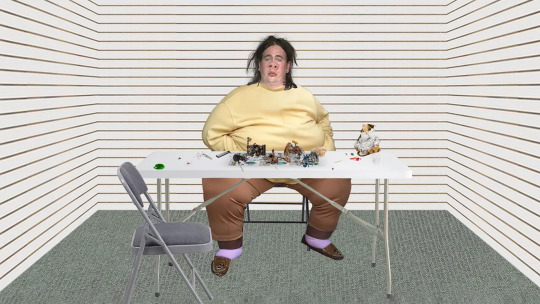
Jon Rafman , Punctured Sky, Joey Bernstein sat at his gamer table in the back of the mall, 2021
The film is concerned with gamer lifestyles, it depicts their messy desks littered with monster energy drink cans, vapes, ashes, food wrappers and unfinished meals. The friend in the film, Joey Bernstein, is severely obese and dies from stage four liver cancer, no doubt as a result of his poor lifestyle. One desk appeared to have water bottles that were filled with urine in order that the gamer didn’t have to leave the desk to urinate, another had a bottle of lotion next to used tissues, implying masturbation had occurred at the desk of the gamer.

Jon Rafman , Punctured Sky, disgusting gamer desk, 2021
This perspective of gamer-lifestyles can be extrapolated beyond the gamerverse, towards a commentary on our relationship with technology. I believe Rafman’s choice to construct the entire film from what appeared to be stock images is a deliberate attempt to materialise our ‘flattening’ of ourselves and our existences into digital media. ‘Flattening’ may also be referred to as standardisation or “abstraction” as mentioned in the Eflux Journal ‘The Internet does not exist’. The ‘flattening’ I’m referring to is the compression of reality into the flattened dimensionality of the screen. Whether by documenting our lives on social media platforms, or spending vast amounts of time interacting with screens, the stock photo epitomises this aesthetic. It delocalizes the subject-matter, ripping the individual or object from their original context and in my opinion is the concentrated form of the internet’s un-truth.
Mismatched hands in the first-person perspective was particularly jarring for me; different images/footage of hands were used for driving a car to those that opened a laptop screen. The hands did not match, and they didn't match the feet that appeared out from the bottom of the bedsheets. I believe this speaks to the disembodiment that occurs as we upload more of ourselves to, and subsequently ‘download’ more aspects of our personalities and livelihoods from digital interactions. I felt discomfort, I felt disembodied, and I felt the protagonist was disembodied from himself, too.
The stock images create and uphold this disgusting, disembodied, liminal space.
Render Ghosts is an exploration by James Bridle into the stock-images of people that are utilised in architectural models. He says “The Render Ghosts are the people who live inside our imaginations, in the liminal space between the present and the future, the real and the virtual, the physical and the digital. A world of architecture, urbanism and the city before it is completed - which is also never.” These ‘render ghosts’ have become detached from their own identities. Bridle launched a project where he intended to track down the people he found in the photos, creating ‘missing person’ style posters with his contact details. The ‘missing’ people were the identities of the individuals depicted in the stock photos.

James Bridle, Render Ghosts/Render Search , Do you recognise these people poster, 2013
I suppose the main point I’m making here is we don’t know who, or what personalities are being invoked by turning people into stock photos. There’s a certain kind of person that simply shouldn’t be allowed to become a stock image, that shouldn’t be allowed to appear in architectural models. Who let this man be a stock photo?! (Show photo of trump).

Trump being used as a stock image, James Bridle, Render Ghosts, 2013
Disembodiment is dangerous, and I believe digitality is a perpetrator of this offence.
But I also think that disgust, and stock photos can play a vital role in the commentary on our predicament, and sometimes this is achieved through humour. In the case I’m about to mention, it’s not problematic in the way Punctured Sky was, it’s a different kind of disgust that’s brought to us through the use of stock-photos. I’m thinking about UNHhhh, a comedy series by drag queens Trixie and Katya - the editing style is really meme-ified and jarring compared to regular, ‘unseen’ editing styles that are unnoticed, and aim to make a video smooth and consumable.
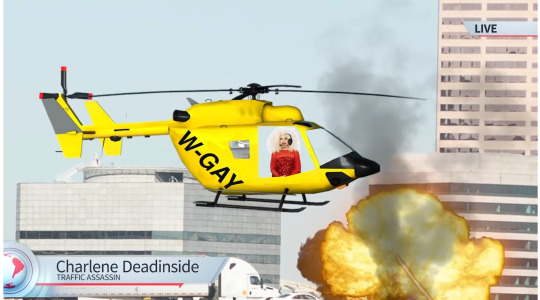
UNHhhh Episode 142, The Weather, 2020, WOW Productions
In an interview, editor Ron Hill says the style originated from “what can I do really quick with no resources?”, and quite often this results in large format text and stock images/videos added to the green-screen footage in a raw, cut-and-paste style. It can only be described as garish and kitsch, as they might be considered as poor aesthetic taste, but are appreciated in an ironic or knowing way. He describes it as “nonsensical photo montage comedy”.

UNHhhh Episode 142, The Weather, 2020, WOW Productions
I think this stock-photo raw garishness aligns perfectly with the context of drag. Drag usurps and comments on everything that is wrong with our cis-het society, and does so appropriately through comedy, in this vulgar, over the top, deliberately disgusting manner. But, that’s part of what makes it hilarious and brilliant. Susan sontag writes that “the essence of Camp is its love of the unnatural: of artifice and exaggeration” She later explains that a key part of Camp is “artifice”; devices or expedients used to trick or deceive others. And I think we can classify stock images within this type of description, only they are not concealed - they are a clear acknowledgement of the deception and un-reality of drag. They allude to the performativity of the medium as expedients are “convenient but possibly improper or immoral”, and stock photos are, too. They are improper, disembodied, falsified representations of reality, and by ripping them from the web, they become immoral, as they are inauthentic.
Sontag also references Bosch, along with Artaud, and comments that their goal is “not creating harmonies, but of overstraining the medium and introducing more and more violent and unresolvable subject matter”. I read Bosch’s Garden of Earthly delights as an early example of ‘flattening’, where the subjects/objects don’t have a seamless synergy with each other or their environment. There’s a discomfort attached to the invocation of multitudes of meaning, contexts and interactions that occur in this triptych.

Garden of Earthly Delights, Hieronymus Bosch, 1490-1510

Garden of Emoji delights by Carla Gannis, 2014
Things are not real, but not entirely unreal either, they become liminal; and as Sontag says, they are “violent and unsolvable”. In Punctured Sky it’s the slow-violence gamers commit against themselves, as we learned from the effects of Joey Bernstein’s lifestyle on his body, and from the disgusting, unhealthy traces that are left on the desks of the gamers. In UNHhhh, it’s the way that Katya is edited into a helicopter, on a satirical news-headline of a traffic assassin helicopter that shoots lasers and creates explosions on the street. In render ghosts, it’s the separation of personal image from identity, and allowing Donald Trump’s identity and personal connotations to ‘fill in’ for a ‘man in a suit’ stock photo, subsequently destroying the safety of the regular anonymity that is normally afforded in this context, by a regular stock-photo model. It’s the figure pooping coins, or the other being sodomised by a piece of fruit in The Garden of Earthly delights. It’s all the “violent and unsolvables”.
If I had more time to work on this piece, the Garden of Emoji Delights would segue into a discussion of memes, and possibly toxic masculinity in the online space. However memes aren’t something I’ve read enough, or know enough about to comment on at this time.
But something I have noticed this week through the seminars, is that for most people this was an opening, or a continuing of a curiosity. I’d like to frame my experience as a form of closure on an idea I had several years ago.
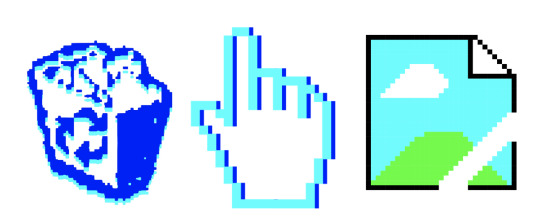
Skeuomorphs from 2019/2020, images are my own.
I was looking at internet imagery (namely old desktop icons, skeuomorphs) and how the windows desktop icons were modelled on the layout of an office. I was trying to comment on the aesthetic of flattened images, and trying to link this to defining an aesthetic of internet imagery; asking “what do internet images look like?”. At the time I didn’t have the language to articulate this or find an answer. But like I said at the beginning, something fell into place when I watched Punctured Sky, and then a peer mentioned Rafman’s sexual offences. A thought fell into place where stock-images are in fact the internet - image - aesthetic I was searching for previously, and for some reason they disgust me. And so this week has been a catalyst for a previous thought I had, and has allowed me to write this short piece I didn’t have the experiences to compile a few years ago.
Bibliography:
https://www.reading design.org/render-ghosts
https://walkerart. org/magazine/keep-that-ron-and-jeff-the-editors-of-unhhhh-on-the-radical-transparency-of-comedy
Sontag, S. (2018) Notes on "camp". S.l.: Penguin.
Aranda, J., Wood, B. and Vidokle, A. (2015). The Internet does not exist. 1st ed. Berlin: Sternberg Press, p.8.
Thom Davies (2018) Toxic Space and Time: Slow Violence, Necropolitics, and Petrochemical Pollution, Annals of the American Association of Geographers, 108:6, 1537-1553, DOI: 10.1080/24694452.2018.1470924
2 notes
·
View notes
Text
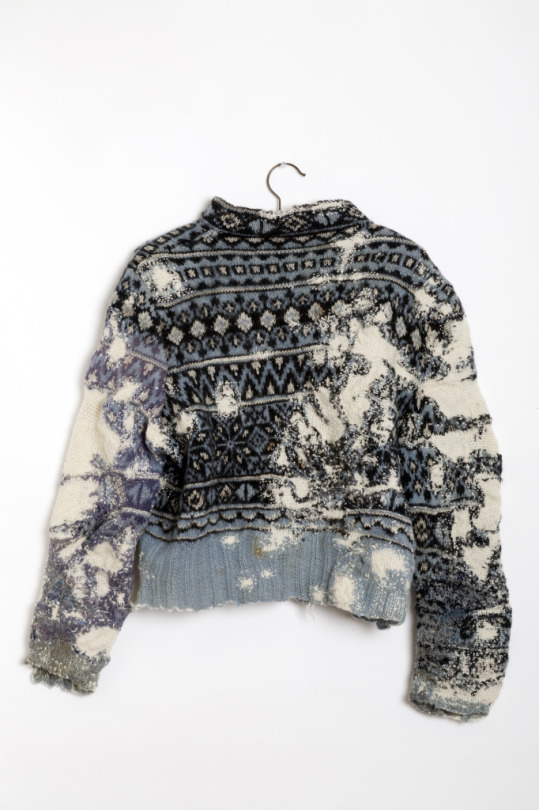
Cylia Pym: Norwegian Sweater | Celia Pym
1 note
·
View note
Text
FMP: Things Worth Keeping : The Value of Attachment in a Disposable World By Christine Harold. LO1
Why We Collect Things That Aren't Necessarily 'Valuable'-Quotes:
Today we simply excise objects once their perceived value is gone. Because the vast majority of value and attachment is manifest at the point of sale, the most effective way to manage the remainder in this model has been to discard— out of sight, out of mind— so we can go buy yet more stuff. If we can instead imagine attaching and assigning value to our objects at different stages of their life cycle, managing the disposal differently, then we are potentially seeing objects in new ways. pg. 231
In a world in which everything is connected, each ecosystem to the other, each object to a system of objects, each subject to its objects and vice versa, the only way out of our current accursed share might be through —not by discarding attachment but by engaging it, deconstructing it in order to construct it anew, and perhaps creating a different world with a different sense of waste and want. pg.232
David Elkind observes that in the past fifty years or so, mass production has made it a reality that “even low- income children today have more toys than children of earlier generations". Once given to celebrate birthdays and Christmas, toys are now routinely purchased all year long. pg.213
The nearest kind of association is not mere perceptual cognition, but, rather, a handling, using, and taking care of things which has its own kind of “knowledge.” —Martin Heidegger, Being and Time pg.169
This notion that handcrafted objects contain, in their material form, some piece of the person who made it has long been a part of how we understand craftsmanship. That these narratives are enjoying a renaissance now, as many of our connections exist digitally and in the cloud, makes sense. Handcrafts seem to provide a more authentic sense of human connection, made tangible through the vehicle of a material object. The celebration of the personal touch afforded by skilled crafters is playing out with maker videos that feature watchmakers, sword makers, and even a woman who makes gold lamé boxer shorts in the French countryside. pg.172-173
The way we attach to objects, how we assign them value, has evolved as capitalism has evolved. pg.211
The making one does in Minecraft is obviously not making things by hand, which, as we’ve seen, does have its own valuable benefits. But many of the cognitive skills it cultivates are clearly transferable as kids move from the world of bits to the world of atoms. Coupled with the dramatic increase in recent years of hands-on, maker- space-influenced educational environments, this pedagogical trend toward experiential learning offers a refreshing alternative to the “teach to the test” strategy that has dominated education in recent decades. The choice is between passing on to young people a mode of engaging objects dominated by a narrow sense of consumption, of getting it right, and one in which they are active participants experimenting with a creative, iterative process in which failure is a feature, not a bug. pg.209
Handmade goods offer different tactile, narrative, and emotional values than those coming off an assembly line. Textile artist Celia Pym explains why for her “craft still matters in a digital world”. pg.186
Harold, Christine. Things Worth Keeping : The Value of Attachment in a Disposable World, University of Minnesota Press, 2020. ProQuest Ebook Central, http://ebookcentral.proquest.com/lib/aib/detail.action?docID=6190698.
It was interesting to me that this article touched on traditional craftsmanship, which has been of key interest to me within the project. Pollock's is defined by traditional practices, with their use of Intaglio. The extract on Minecraft as a vessel for creativity made me think to my ideas of gamification to engage the younger generation.
1 note
·
View note
Text
https://1granary.com/designers-3/schools/royal-college-of-art/celia-pym/

The radical art of mending with woollen thread and viewing the world through the lens of objects
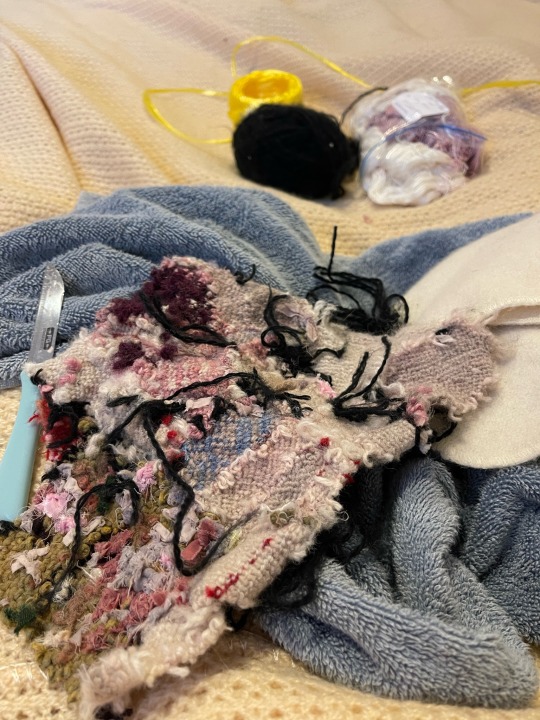
My weaving project
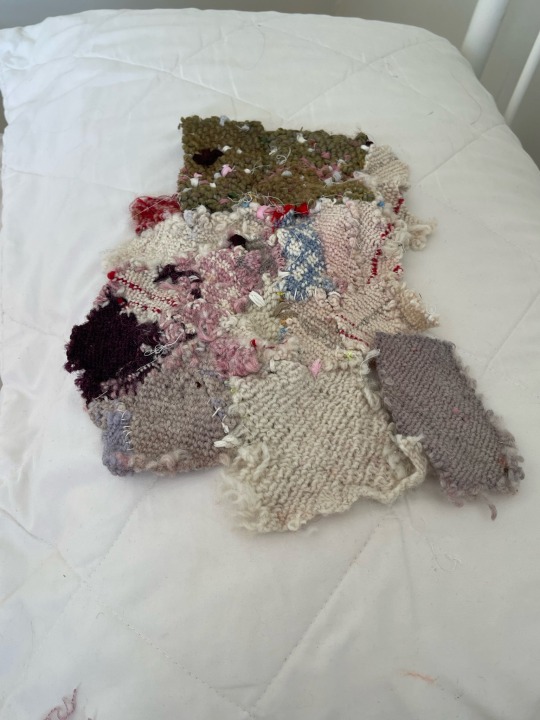

In steps
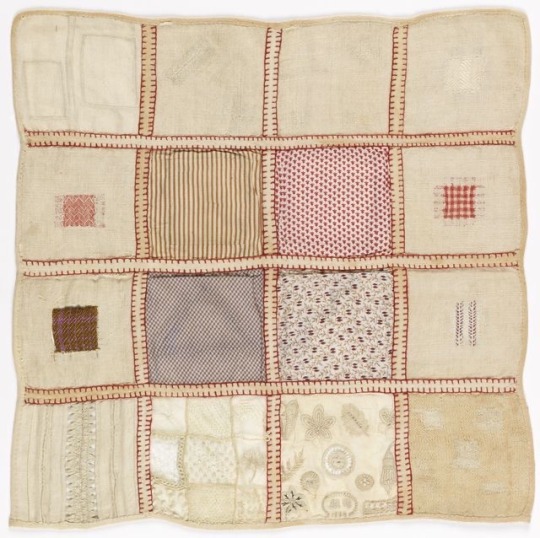
Antique sampler

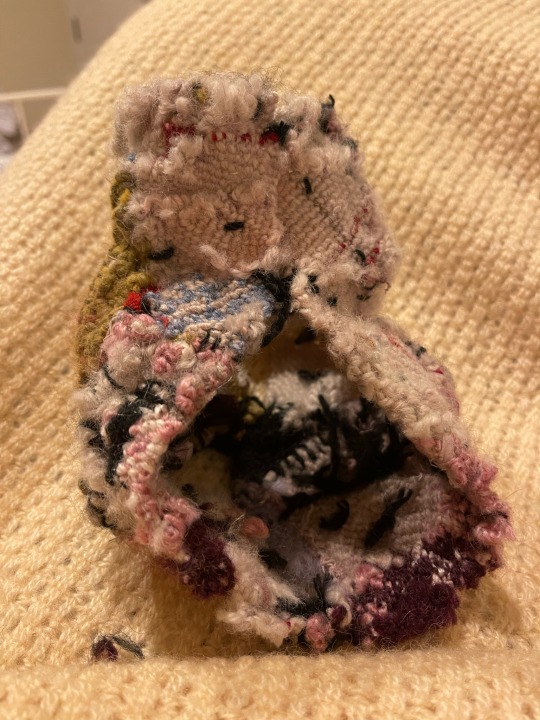
Constantly folding over the cloth comparing the pattern, adding knots, untying, cutting, shaping using water, pushing through new thread as I go along
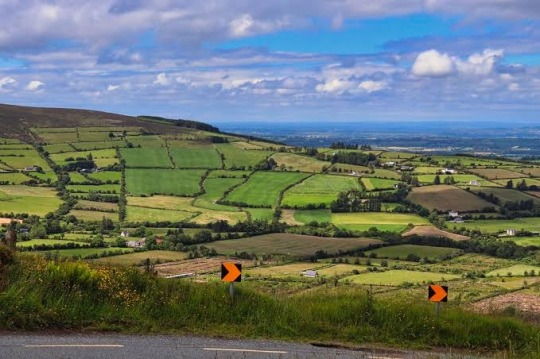
Aiming to reflect the patchwork of the landscape rolling over the hills that I can see up on the drive to my nana and grandads house in one tree point, whangarei
0 notes
Text
entering my celia pym era
0 notes
Text

Celia Pym
Working with garments that belong to individuals as well as items in museum archives, [Pym] has extensive experience with the spectrum and stories of damage, from small moth holes to larger accidents with fire.
Her interests concern the evidence of damage, and how repair draws attention to the places where garments and cloth wear down and grow thin. In clothing, this is often to do with use and how the body moves.
She explores the difficulties of mending other people’s clothes, the materials used for mending, and making damage visible. Pym’s tools are scissors, yarn and a sharp needle.
“Darning is small acts of care and paying attention. The damage, in a way, does the work for me” she explains. “I respond to it. The mending is slow work to hold the damage in place.”
#celiapym#Celia pym#textile#home#shape#writing#art#mending#knitting#sustainable fashion#sustainability#darning#visible mending#cloth#garments#yarn#needlework
31 notes
·
View notes
Photo
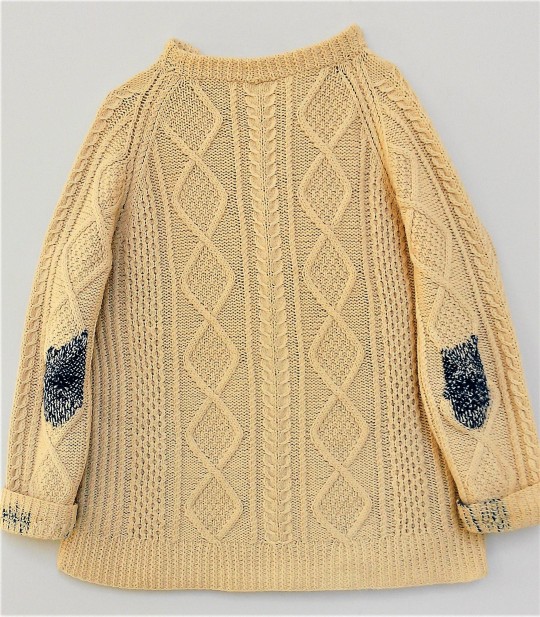
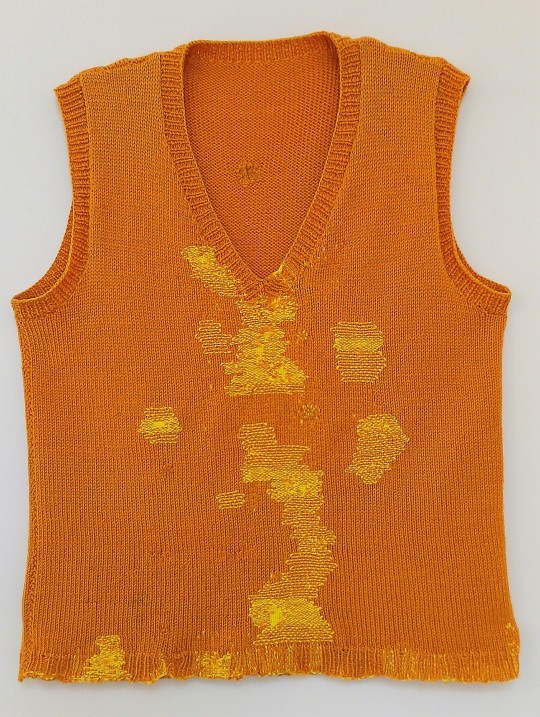


Mending Days, Celia Pym, V&A, London, 2017
The ‘Mending Day’ series forms part of the Woman’s Hour Craft Prize 2018 exhibition at the V&A. Celia Pym, is a professional repair artist, who sympathetically darns other people’s clothing, to explore our attitudes to care and repair.
4 notes
·
View notes
Text

An edit from the darning workshop with Celia Pym: learning to darn and trouble shooting handiwork. Understanding the eb & flow, mending and understanding the sock as a care/support garment.
#socks#sock#sock saga#transfocality project#care#care takers#darning#darned#damaged#sewing#stitching#Celia pym#fabric#thread#textiles#mending#handiwork#design#caretakers
2 notes
·
View notes
Photo

Norwegian Sweater, Celia Pym, 2010
5K notes
·
View notes
Photo
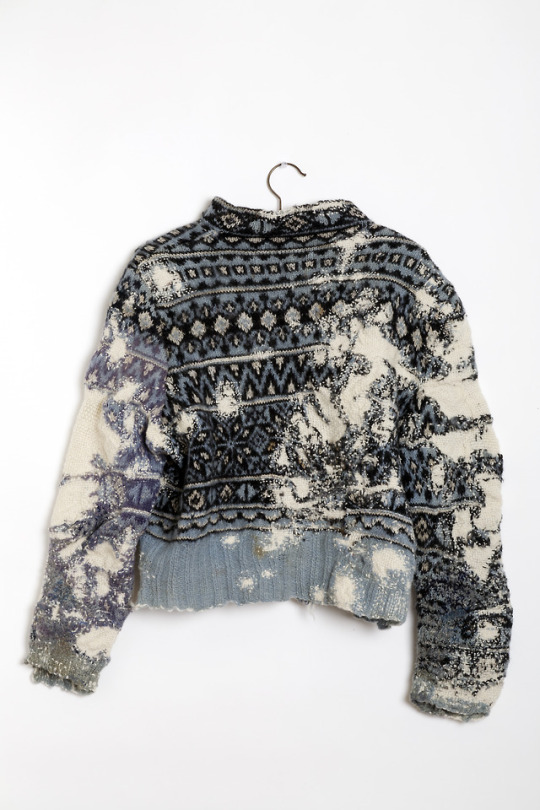
Norwegian Sweater, Celia Pym
9 notes
·
View notes
Photo
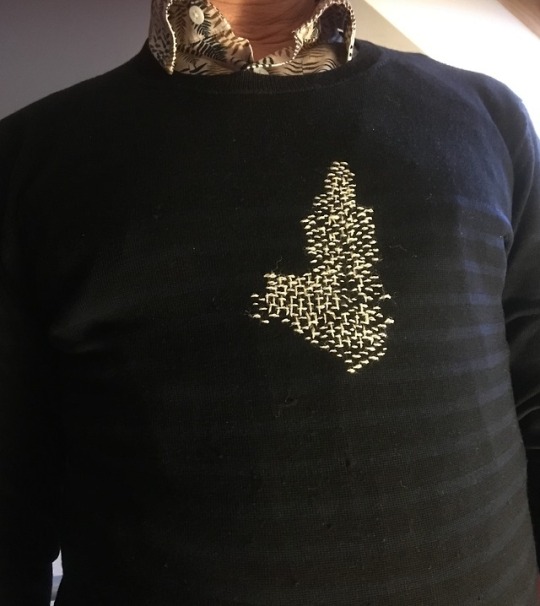
Darn It! December 2017
I was able to put the darning workshop with Celia Pym to good use on a much loved item of clothing. The likeness of the darned area to the head of a rabbit is a happy accident!
5 notes
·
View notes

